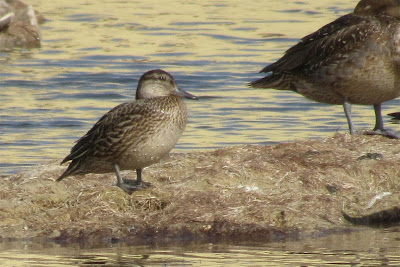I am not going there very often any more as I feel too much upset.
Ironically, there is short period when the reeds are growing more fulsome and the muddy areas which have appeared are attracting more waders. In the end though it will be gone.
It wasn't difficult to see the local African swamphen around the reeds.
African swamphen
Eurasian coot are still breeding her too.
Eurasian coot
There is no doubt the numbers of little grebe are down. Of all the local breeders this is the one that requires the deepest waters.
little grebe
The fourth of the local breeders is common moorhen. Their numbers seem little affected yet.
black-headed gull and northern shoveller
Gulls are attracted here all winter but ducks much more so in early winter i.e November and December. It has been best to arrive early in the morning before the ducks are fully awake. They disperse out of the lake as the morning progresses. I can't say with any certainty where they go.
Northern Shoveller, common teal and pintail were the vast majority of ducks there last week.
pintail (foreground)
The teal in particular disappear from F-Nord Lake. I am seeing plenty at the waste water site. I suppose it is feasible that the birds are commuting between the two places.
teal
greater flamingo
Most gulls were black-headed gull. A few Mediterranean gull can also be present and there were three this time.
black-headed gull
The most common wader for much of the year has been wood sandpiper followed by little stint. There are always others. This time they included at least two dunlin.
dunlin
Black-tailed godwit was also present. As a very general rule, black-tailed godwit shows a preference for fresher water sites around here and bar-tailed godwit more saline.
black-tailed godwit
The lower water levels are suiting common snipe at the moment.
common snipe
.
European turtle dove
Last winter, a black-necked grebe stayed all through. This one found a small patch of deeper water last week. I can guarentee it won't stay as long as last year's bird.
black-necked grebe














No comments:
Post a Comment